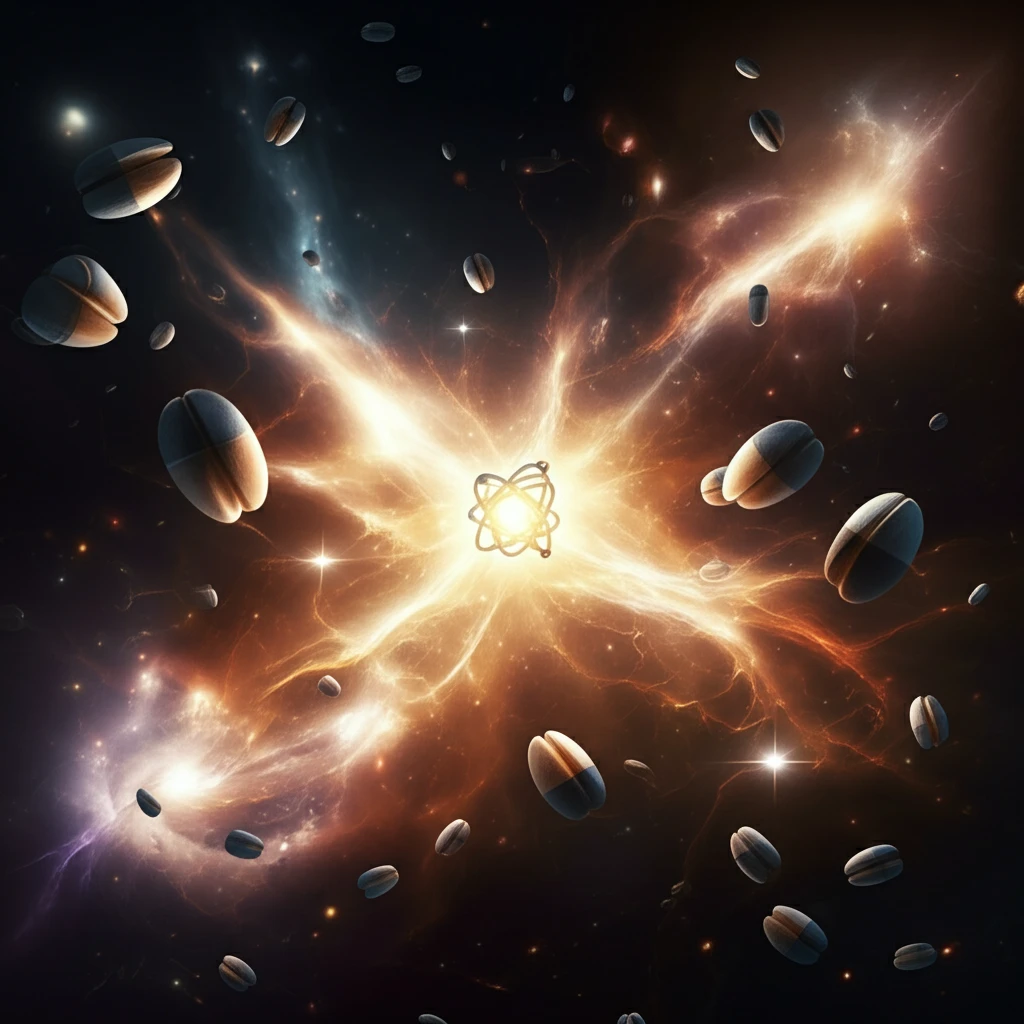
Unlocking the Secrets of Heavy Quark Baryons: A New Frontier in Particle Physics
"Explore how scientists are using meson-baryon interactions to understand exotic baryons with open beauty, potentially revolutionizing our understanding of fundamental particles."
The world of particle physics is constantly evolving, pushing the boundaries of our understanding of matter and the fundamental forces that govern the universe. One particularly intriguing area is the study of hadrons, composite particles made of quarks held together by the strong force. While traditional models describe mesons (quark-antiquark pairs) and baryons (three quarks), recent discoveries suggest the existence of more exotic forms of matter, challenging established theories.
Among these exotic particles are the heavy quark baryons, which contain one or more heavy quarks like beauty (b) or charm (c). These baryons offer a unique window into the strong force, allowing scientists to probe its behavior in extreme conditions. Unlike lighter quarks, heavy quarks provide a more stable and predictable environment, simplifying the complex interactions within the hadron.
Recent research has focused on understanding the structure and properties of baryons containing the beauty quark. These studies often involve analyzing the interactions between mesons (particles made of a quark and an antiquark) and baryons. By examining these interactions, physicists hope to identify new, dynamically generated states that don't fit neatly into the traditional quark model. This exploration could lead to a more complete and nuanced understanding of the strong force and the diverse forms of matter it can create.
Deciphering Meson-Baryon Interactions: A Key to Exotic Baryons

The study of meson-baryon interactions is crucial for understanding the dynamics of exotic baryons with open beauty. These interactions, where mesons and baryons exchange particles, can lead to the formation of new, resonant states. Scientists use theoretical models, such as the extended local hidden gauge approach, to describe these complex interactions and predict the existence of new particles.
- Extended Local Hidden Gauge Approach: Uses vector meson exchange to model meson-baryon interactions.
- Heavy Quark Spectator: Simplifies interactions, allowing focus on light quark dynamics.
- Dynamical Generation: Predicts new exotic states arising from meson-baryon interactions.
Charting the Course: Future Directions in Heavy Quark Baryon Research
The exploration of heavy quark baryons and their interactions is an ongoing journey. Future research will focus on refining theoretical models, conducting more precise experiments, and searching for additional exotic states. These efforts promise to deepen our understanding of the strong force and reveal the diverse ways in which quarks can combine to form matter. By continuing to push the boundaries of particle physics, scientists hope to uncover new insights into the fundamental building blocks of the universe.
